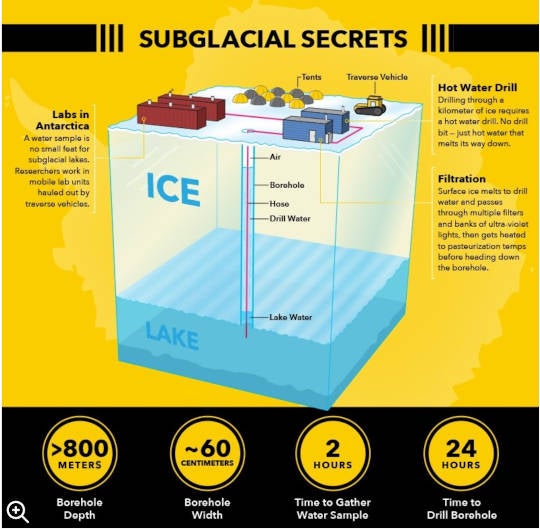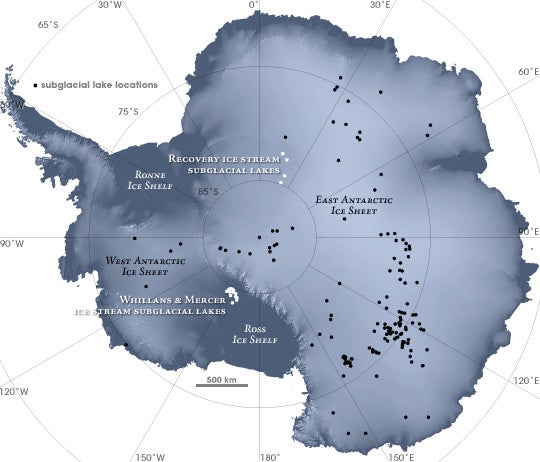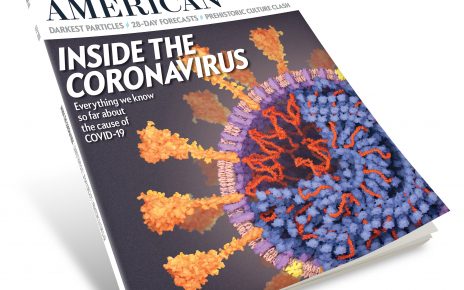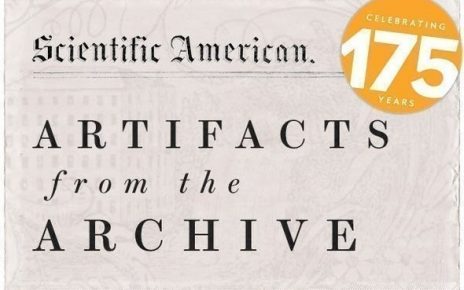Have you ever wondered what the subglacial lakes of Antarctica look like? I have.
In this video, a team of American scientists led by Dr. John Priscu of Montana State University and including Dr. Trista Vick-Majors, lead author of a new study on Subglacial Lake Whillans, take a peek at subglacial Lake Mercer.
A Glimpse of Mercer Subglacial Lake – SALSA Science Team from SALSA Antarctica on Vimeo.
Long ago, Antarctica was green. Blanketed by forests full of dinosaurs, it was downright vivacious. One reason Robert Scott perished during his South Pole attempt was that he was still draggimg extremely heavy fossils of this life — the first found — back to his ship. Roald Amundsen just wanted to get to the pole and back.
Of course, thanks to continental drift and climate change, Antarctica is now buried under a mile or so of ice. But the terrain below is not solid everywhere. Instead, more than 400 lakes dot the continent, interlaced by rivers and streams that drain to the Southern Ocean. These lakes were only discovered in the 1970s and bored into for the first time in 2012, although their existence had been suspected since the late 19th century, when the Russian scientist Peter Kropotkin raised the possibility.
I’ve always wondered about these lakes. What is in them? What do they look like? Are there stunted worms and squibby blind fish? Nessie relatives? Malevolent rings? A Starbucks?
Lake Whillans in West Antrarctica is one such desolate place. Though the lake is 20 square miles in size and it takes 24 hours to bore through a half mile of ice with a hot water drill to get there, it is only seven feet deep, as you saw in the video.

Turns out what’d down there is mainly water, rock, sediment, and microbes — definitely not as weirdly exciting as as a girl could hope. Still, it’s not sterile. The fluffy stuff falling like snow in the water is sediment stirred up by the camera, including some of those microbes — bacteria and archaea — and the waste they generate in the process of doing their thing.
Many of the diverse array of bacteria and archaea inhabiting the lake are self-sufficient. They make food for themselves using the power in reduced iron, sulfur, and nitrogen compounds found in the lake, just as plants and algae at Earth’s surface make food using power from the sun.
Though rugged, life grows slowly down there: the estimated doubling time for these microbes is 196 days. In the lab, E. coli divides every 20 minutes. That inferred growth rate is at least 10 times lower than that observed in Antarctic surface lakes or in nutrient deserts in the ocean.
Using data collected during the expedition depicted in the video, the scientists calculated that Whillans microbes make so much organic matter from these chemical power sources that they contribute a significant amount of nutrients to the dark, ice-covered Southern Ocean at the lakes’ outflow — 5,400% more than the demand within the Siple Coast embayment into which it drains. The combined effluence of 400-plus Antarctic lakes no doubt exerts a significant influence on the Southern Ocean’s chemistry and biology. Indeed, it would be surprising if the plumbing of a continent-sized ice sheet did not.
References
Vick‐Majors, Trista J., Alexander B. Michaud, Mark L. Skidmore, Clara Turetta, Carlo Barbante, Brent C. Christner, John E. Dore et al. “Biogeochemical Connectivity Between Freshwater Ecosystems beneath the West Antarctic Ice Sheet and the Sub‐Ice Marine Environment.” Global Biogeochemical Cycles 34, no. 3 (2020): no-no.
Achberger, Amanda M., Brent C. Christner, Alexander B. Michaud, John C. Priscu, Mark L. Skidmore, Trista J. Vick-Majors, W. Adkins et al. “Microbial community structure of subglacial lake Whillans, West Antarctica.” Frontiers in microbiology 7 (2016): 1457.
Vick-Majors, Trista J., Andrew C. Mitchell, Amanda M. Achberger, Brent C. Christner, John E. Dore, Alexander B. Michaud, Jill A. Mikucki, Alicia M. Purcell, Mark L. Skidmore, and John C. Priscu. “Physiological ecology of microorganisms in subglacial Lake Whillans.” Frontiers in microbiology 7 (2016): 1705.



